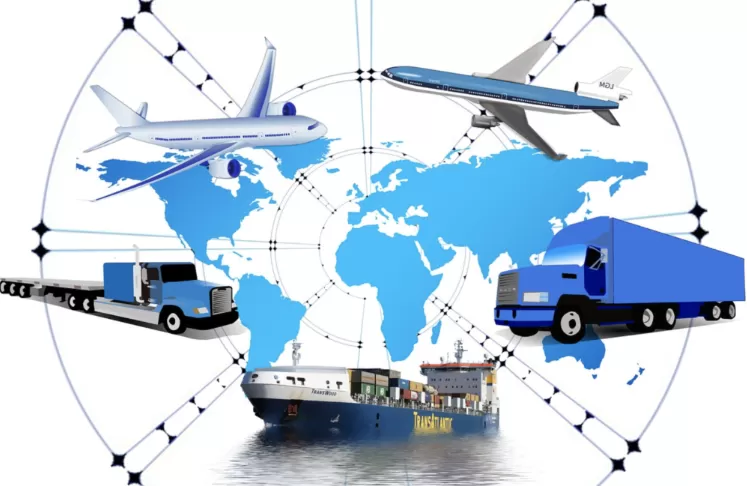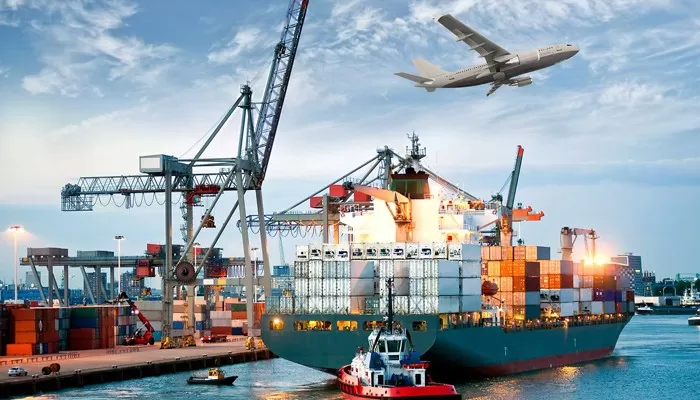Most businesses treat freight forwarders as simple booking agents. They're making a costly mistake. In today's volatile shipping landscape, your forwarder isn't just moving boxes—they're your strategic partner in navigating port congestions, carrier capacity crises, and regulatory complexity.
This guide delivers what others don't: actionable frameworks for selecting and managing forwarders that actually drive business value, not just basic checklists.
1. Understanding Modern Forwarding: Beyond Basic Definitions
1.1 The Four Pillars of Modern Forwarding Excellence
What separates transactional providers from strategic partners:
text
Operational Mastery:
• Not just booking space, but managing exceptions
• Deep carrier relationships that guarantee capacity
• Port-specific knowledge that avoids bottlenecks
• Customs expertise that prevents costly delays
Technology Integration:
• Real-time visibility, not just weekly updates
• API connectivity that integrates with your systems
• Predictive analytics that anticipate disruptions
• Automated documentation that eliminates errors
Commercial Intelligence:
• Dynamic pricing models that adapt to market shifts
• Volume leverage that delivers real savings
• Contract management that protects your interests
• Cost transparency that reveals hidden margins
Strategic Partnership:
• Supply chain design, not just execution
• Continuous improvement, not just maintenance
• Risk management, not just reaction
• Innovation adoption, not just following standards
1.2 The Forwarder Evolution Spectrum
Understanding who really fits your needs:
Digital-Native Platforms (Flexport, Freightos)
Best for: Tech-heavy organizations wanting transparency
Strengths: User experience, real-time data, instant quoting
Watch for: Operational depth during disruptions, personalized service gaps
Global Integrators (DHL, Kuehne+Nagel, DSV)
Best for: Complex global operations needing single-point accountability
Strengths: Network scale, carrier relationships, comprehensive services
Watch for: Bureaucracy, flexibility limitations, cost structure
Regional Specialists
Best for: Focused trade lane operations
Strengths: Local expertise, flexibility, personalized service
Watch for: Scaling limitations, technology investment levels
Niche Experts (Pharma, Project Cargo, Automotive)
Best for: Specialized compliance or equipment needs
Strengths: Industry-specific knowledge, specialized assets
Watch for: Cost premiums, geographic limitations
Operational Capabilities (40 points):
text
Trade Lane Mastery (15 points):
• Minimum 3 years specific lane experience
• Direct carrier contracts, not just co-loader arrangements
• Port-specific operational teams
• Customs brokerage in-house capability
Performance Track Record (15 points):
• 95%+ on-time performance documented
• Sub-1% claims ratio with transparent handling
• Communication response times under 2 hours
• Crisis management case studies
Scalability Proof (10 points):
• Peak season capacity guarantees in writing
• Volume fluctuation handling procedures
• Disaster recovery and contingency plans
• Reference checks with similar-sized clients
Technology & Data Capabilities (30 points):
text
Platform Sophistication (15 points):
• Real-time API integration capability
• Predictive ETA with confidence scoring
• Automated exception management
• Mobile-first tracking experience
Data Intelligence (10 points):
• Customizable KPI dashboards
• Cost per unit analytics
• Carbon emission tracking
• Benchmarking against industry standards
Innovation Commitment (5 points):
• Clear technology roadmap
• Regular feature releases
• Client advisory board participation
• Industry 4.0 technology adoption
Commercial Excellence (20 points):
text
Pricing Transparency (10 points):
• All-in pricing models
• Clear surcharge breakdowns
• Volume incentive transparency
• Contract term flexibility
Financial Health (10 points):
• Credit rating and financial statements
• Insurance coverage verification
• Bonding capacity confirmation
• Payment term flexibility
Strategic Alignment (10 points):
text
Cultural Fit (5 points):
• Communication style matching
• Problem-solving approach
• Account team stability
• Global coverage alignment
Partnership Potential (5 points):
• Innovation collaboration willingness
• Continuous improvement commitment
• Joint business planning
• Value-added service offerings
2.2 The Implementation Readiness Assessment
Before you sign, verify they can actually deliver:
text
Technology Integration Checklist:
✅ RESTful APIs with proper documentation
✅ EDI capability for enterprise systems
✅ Data security and GDPR compliance
✅ UAT environment for testing
Operational Onboarding Process:
✅ Dedicated implementation team
✅ Process mapping workshops
✅ Pilot shipment program
✅ Knowledge transfer schedule
Performance Baseline Establishment:
✅ Current state performance metrics
✅ Joint KPI development
✅ Reporting cadence agreement
✅ escalation protocol definition
3. Cost Management Masterclass
3.1 The True Cost Breakdown Most Forwarders Hide
Ocean Freight Component (40-60%):
text
Base Rate Realities:
• Carrier contract rates vs. spot market access
• Equipment type differentials (standard vs. specialized)
• Transit time premiums (fast vs. slow steam)
• Capacity guarantee costs
The Surcharge Maze:
• BAF (Bunker Adjustment Factor) calculation methods
• CAF (Currency Adjustment Factor) transparency
• PSS (Peak Season Surcharges) predictability
• Port congestion surcharge justification
Origin Charges (15-25%):
text
Port & Terminal Fees:
• THC (Terminal Handling Charges) variations by port
• Documentation and processing fee reasonableness
• Export customs clearance efficiency costs
• Equipment positioning and imbalance charges
Inland Transportation:
• Trucking vs. rail cost optimization
• Fuel surcharge calculation methodology
• Accessorial charge predictability
• Demurrage and detention risk pricing
Destination Costs (20-30%):
text
Import Complexity:
• Destination port charges breakdown
• Customs bond and entry filing fees
• Examination and inspection cost management
• Pier pass and security fee optimization
Final Mile Realities:
• Urban delivery surcharge justification
• Appointment requirement cost impacts
• Special handling requirement pricing
• Returns management cost structure
Forwarder Fees (5-15%):
text
Service Fee Models:
• Percentage-based vs. fixed fee analysis
• Performance-based pricing options
• Minimum volume commitment implications
• Value-added service pricing transparency
What to specifically ask for in contracts:
Currency Exchange Margins - Request actual bank rates plus fixed fee
Insurance Markups - Demand direct insurer quotes
Documentation Fees - Negotiate per shipment, not per document
Communication Surcharges - Eliminate fees for basic customer service
Minimum B/L Fees - Weight-based pricing only
Equipment Imbalance Charges - Carrier responsibility, not yours
Data Access Fees - API connectivity included in base fees
Amendment Charges - Free minor changes, reasonable major changes
Peak Season Fees - Transparent calculation methodology
Emergency Surcharges - Pre-approved scenarios only
Compliance Monitoring - Included in base service
Performance Reporting - Standard in service offering
Account Management - No separate charges for basic service
Technology Access - Platform fees included
Contract Administration - No ongoing management fees
4. Technology Capability Assessment
Level 1: Digital Foundation (Avoid)
Basic online booking portals
Manual data entry requirements
Email-based tracking updates
PDF documentation only
Level 2: Integrated Operations (Minimum Viable)
API integration capabilities
Real-time tracking with ETAs
Automated documentation generation
Basic analytics and reporting
Level 3: Predictive Intelligence (Target)
AI-powered disruption prediction
Automated optimization recommendations
Advanced analytics and benchmarking
Customizable dashboards and alerts
Level 4: Ecosystem Integration (Ideal)
End-to-end supply chain visibility
Blockchain-enabled documentation
IoT integration for condition monitoring
Automated regulatory compliance
Must-have capabilities for 2024:
text
Real Visibility Requirements:
✅ Vessel-level tracking with predictive ETAs
✅ Container-level visibility through entire journey
✅ Exception alerts with resolution recommendations
✅ Multi-modal tracking (ocean, truck, rail)
Integration Capabilities:
✅ RESTful APIs with proper documentation
✅ EDI support for enterprise systems
✅ Real-time webhook notifications
✅ Data export in multiple formats
Analytics & Reporting:
✅ Customizable KPI dashboards
✅ Cost per unit analysis
✅ Performance benchmarking
✅ Carbon emissions tracking
Documentation Automation:
✅ Automated document generation
✅ Electronic Bill of Lading capability
✅ Customs documentation automation
✅ Compliance checking automation
5.1 The Forwarder Risk Assessment Matrix
Financial Risk (30% weight):
Credit rating verification
Payment term requirements analysis
Insurance coverage confirmation
Financial stability indicators
Operational Risk (25% weight):
Historical performance validation
Capacity reliability assessment
Emergency response capability
Quality control processes
Compliance Risk (20% weight):
Regulatory compliance certification
Sanctions screening capability
Audit readiness verification
Training and certification standards
Technology Risk (15% weight):
System reliability history
Data security protocols
Disaster recovery testing
Cyber insurance coverage
Strategic Risk (10% weight):
Account management stability
Communication protocols
Cultural alignment
Innovation commitment
Critical clauses you must include:
text
Liability & Insurance:
• Minimum $1M cargo liability coverage
• Additional insured status confirmation
• Subrogation waiver agreement
• 30-day claims handling requirement
Performance Guarantees:
• 95% on-time performance minimum
• Financial penalties for underperformance
• Monthly performance reporting
• Quarterly business review requirements
Termination & Exit:
• 30-day termination for cause
• 90-day termination for convenience
• Data ownership and transition assistance
• 60-day post-termination support
Data & IP Protection:
• Your data ownership confirmation
• API integration IP rights
• Confidentiality protection
• Analytics usage rights
6. Implementation Excellence Framework
6.1 The 90-Day Onboarding Success Plan
Weeks 1-2: Foundation Building
Joint steering committee establishment
Current state process mapping
KPI definition and baseline establishment
Communication protocol agreement
Weeks 3-6: Operational Integration
System integration and testing
Process documentation completion
Team training and capability building
Pilot shipment execution
Weeks 7-12: Performance Ramp-up
Volume gradual increase
Performance monitoring and adjustment
Issue resolution process validation
Continuous improvement initiation
6.2 The Performance Management System
Monthly KPI Dashboard Must Include:
text
Operational Metrics:
• On-time pickup and delivery performance
• Documentation accuracy rates
• Exception occurrence and resolution time
• Capacity commitment fulfillment
Commercial Performance:
• Cost per unit across all shipments
• Invoice accuracy and timeliness
• Cost savings realization tracking
• Contract compliance monitoring
Strategic Measures:
• Innovation initiative progress
• Risk reduction achievements
• Customer satisfaction scores
• Strategic goal alignment
7. Industry-Specific Considerations
Peak season capacity guarantees
Cross-docking capability
Returns management integration
Last-mile delivery coordination
7.2 Manufacturing & Industrial Needs
Production line synchronization
Just-in-time delivery capability
Heavy equipment handling
Milk run optimization
GDP compliance certification
Temperature control validation
Serialization capability
Regulatory documentation expertise
7.4 High-Tech & Electronics Specifications
ESD protection protocols
High-value cargo security
Anti-counterfeiting measures
Component-level tracking
8. Continuous Improvement Framework
8.1 The Quarterly Business Review Template
Required discussion points:
Performance against agreed KPIs
Cost improvement initiatives
Service issue resolution
Innovation opportunity identification
Market intelligence sharing
Strategic planning alignment
Level 1: Transactional (Basic service delivery)
Level 2: Relational (Proactive communication)
Level 3: Collaborative (Joint problem-solving)
Level 4: Strategic (Shared value creation)
Level 5: Transformational (Industry innovation)
Conclusion: Building Forwarder Partnerships That Deliver Real Value
Selecting the right sea freight forwarder isn't about finding the cheapest option. It's about identifying a partner who can navigate market volatility, drive continuous improvement, and contribute to your competitive advantage.
The most successful shippers combine rigorous selection processes with active partnership management. They treat their forwarders as extensions of their team, not as vendors. They invest in the relationship, measure performance relentlessly, and collaborate on innovation.
Your next forwarder selection should be strategic, not transactional. Use these frameworks to find partners who will help you build more resilient, efficient, and competitive supply chains.
Frequently Asked Questions: Sea Freight Forwarder Selection
1. Q: What specific questions should I ask about their carrier relationships during the selection process?
A: Don't just ask if they have carrier relationships - ask for specific evidence. Request to see carrier appointment letters, volume commitment documentation, and examples of how they've secured capacity during peak seasons. A forwarder with real relationships will show you carrier performance scorecards and joint business planning documents, not just claim they have "good connections."
2. Q: How do I verify if a forwarder actually has direct contracts with shipping lines versus just using co-loaders?
A: Ask to see copies of master bills of lading from recent shipments. Direct contracts will show the forwarder's name as the shipper. Also, request their NVOCC license number and verify it matches the documentation. Forwarders relying heavily on co-loaders often can't provide consistent documentation across shipments.
3. Q: What's the difference between a forwarder's cargo liability insurance and carrier liability coverage?
A: Forwarder cargo insurance covers their operational errors - mishandling documents, incorrect routing, or failure to properly declare goods. Carrier liability only covers physical loss or damage during transit. You need both, and you should request certificates of insurance specifically showing errors and omissions coverage, not just standard cargo insurance.
4. Q: How can I assess a forwarder's financial stability without accessing their private financial records?
A: Request their D&B rating, ask for trade references from carriers and other clients, and check how they pay their vendors. Forwarders who consistently pay carriers in 45-60 days are typically financially healthy. Those demanding 90+ days from you but paying carriers in 30 days might be using your money to fund operations.
5. Q: What technology integration red flags should I watch for during demonstrations?
A: Be wary if they can't provide a sandbox environment for testing, if their API documentation is outdated, or if basic data fields like ETAs aren't available through integrations. Ask to see their API change log - forwarders who update frequently are investing in technology, while static APIs suggest stagnation.
6. Q: How do we handle the transition if we're changing forwarders mid-contract with another provider?
A: Start with parallel operations - run 10-15% of your volume with the new forwarder while maintaining the existing relationship. Use this period to validate their performance claims. Ensure you have data export clauses in your old contract so you can transfer historical shipping data to the new provider's systems.
7. Q: What should we look for in a forwarder's quality management system beyond basic certifications?
A: Ask for their internal audit results, corrective action reports, and process improvement initiatives. Certified forwarders should show you how they use ISO principles daily, not just for certification. Look for evidence of root cause analysis on service failures and preventive action plans.
8. Q: How do we evaluate a forwarder's customs brokerage capability if we're new to international trade?
A: Ask for their customs exam rate history - the percentage of shipments selected for inspection. Industry average is 3-5%; strong performers are under 2%. Also request samples of their customs documentation and ask them to walk through how they'd handle different HS code classification scenarios for your products.
9. Q: What contract terms should we avoid that might lock us into unfavorable terms?
A: Watch for automatic renewal clauses without performance review, liquidated damages that only apply to your breaches, and termination fees that exceed three months of service charges. Also avoid "most favored nation" clauses that prevent you from getting better rates with other providers for different services.
10. Q: How can we verify a forwarder's claims about their sustainability and carbon reduction programs?
A: Request their methodology for calculating carbon emissions, verification from third parties like SmartFreight or Clean Cargo, and specific examples of emission reductions achieved for clients. Ask for their carrier selection criteria related to environmental performance and how they validate carrier emissions data.
11. Q: What should we expect regarding communication protocols during exceptions or disruptions?
A: The forwarder should provide a clear escalation matrix with multiple contact methods, guaranteed response times for different severity levels, and proactive notification procedures. Ask for examples of how they communicated during recent port strikes or weather disruptions - look for evidence of predictive alerts, not just reactive updates.
12. Q: How do we assess a forwarder's ability to handle our specific commodity type if they're new to our industry?
A: Request to interview the actual operations team who will handle your account, not just sales people. Ask for their training records on commodity-specific regulations. Have them demonstrate their knowledge of your industry's unique requirements through scenario-based questions about handling recalls, special documentation, or regulatory changes.

 EN
EN
 FR
FR
 ES
ES
 JA
JA
 PT
PT
 RU
RU
 AR
AR








